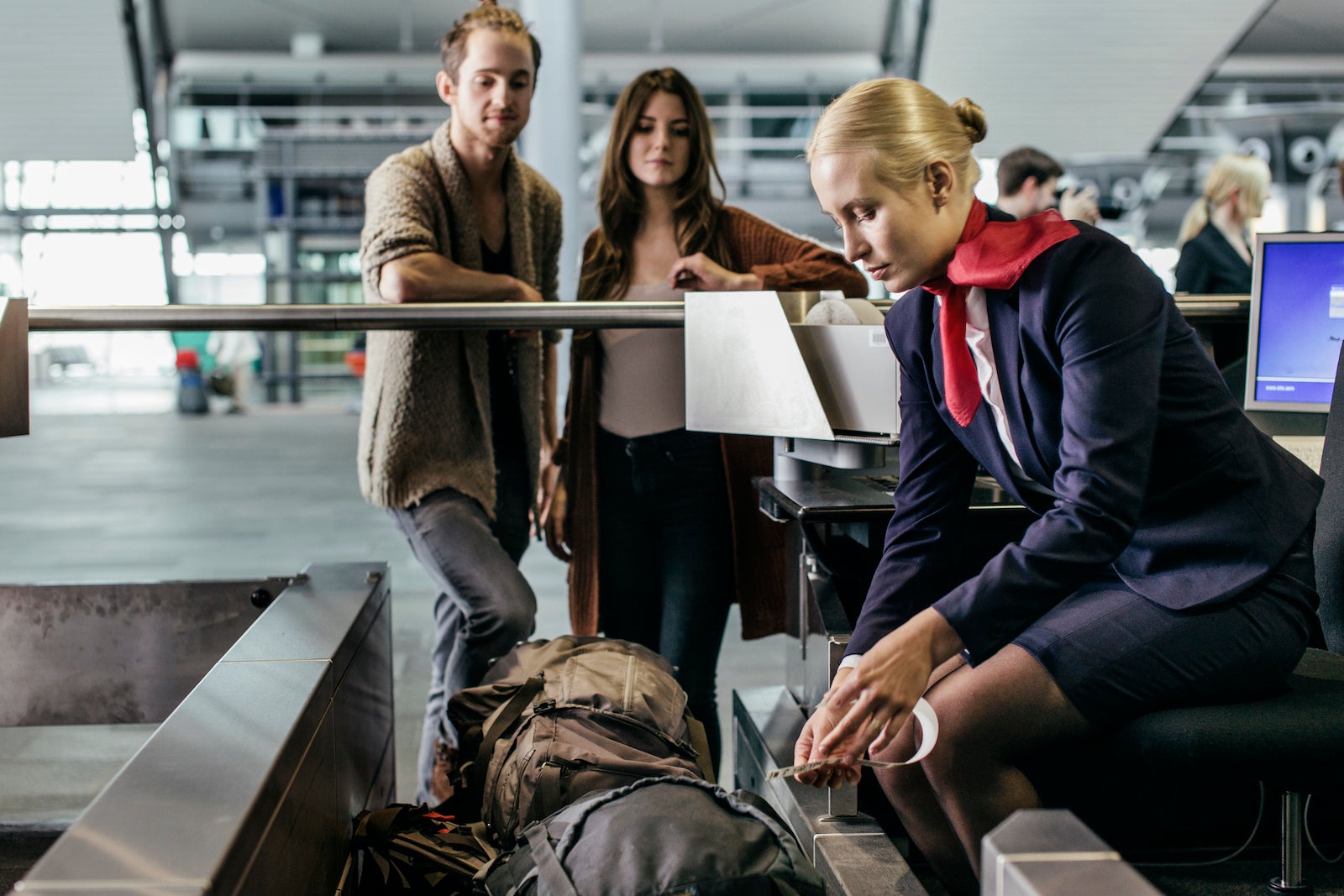Why you should always check your bag tag at check-in
It's never fun when your luggage arrives at a completely different destination than you do. Unfortunately, that happens to thousands of travelers each day.
Nearly 250,000 checked bags were mishandled (meaning lost or delayed) in the U.S. during August 2023, according to a recent report from the U.S. Department of Transportation. That equals an average of 6.1 checked bags per 1,000 — and those are just the statistics for U.S.-based airlines. When you think about how many international airlines there are and the potential for mishandled bags with them, the number skyrockets.
One major cause of lost or delayed baggage is due to incorrect tagging. When you hand your luggage off at the check-in counter, do you take a look at the bag tag before it disappears onto the conveyor belt? If not, here's why you should start doing so.
How does a bag get tagged to the wrong destination?
The simplest answer is that the check-in agent may have accidentally input the wrong destination code. You may be going to Dallas Fort Worth International Airport (DFW), but if the agent accidentally types in DTW, your bag will arrive at Detroit Wayne County International Airport instead. Or maybe you're going to San Juan, Puerto Rico, where the airport code is SJU, but the agent misroutes your luggage to SJO, an airport in Costa Rica.
Another possibility is that someone else's bag tag with a different destination was affixed to your luggage. Maybe the check-in agent printed out an extra tag from the previous customer and, instead of throwing it out, inadvertently used that one on your luggage. They might've put the same wrong claim tag on your boarding pass.
If your luggage has a tag with your contact information, it's highly likely you'll eventually be reunited with your bags (though it may not happen as quickly as you'd like). Be sure to have your contact details in multiple places — a tag on the outside and something inside of each suitcase is advised. If there's no ID tag, your bags will likely sit around with all the other unclaimed luggage.
Related: My bag wasn't tagged correctly — reader mistake story
How to avoid your bag being tagged incorrectly
Unless you have elite status or use the right credit cards, many airlines charge $60 per checked bag on a round-trip flight (or sometimes even more). So, it's importamt to do all you can to ensure your bag gets tagged properly.
Confirm the destination on the tag
Ask the check-in agent if you can see the bag tag either before it's placed on your luggage or before your luggage is sent down the conveyor belt. If you're checking multiple bags, be sure to look at the tag for every bag.

Check the connection, too
Not only should you check for the destination, but you should also check the connection if you are not flying nonstop.
This is especially important because bags are not always routed directly to the final destination. Sometimes, you may be responsible for picking up your bag from the first leg of your journey and rechecking it; the best way to confirm this is to see what's on the bag tag.
For example, when you return to the U.S. from an international trip, you typically have to collect your luggage and recheck it for your connecting flight. Be sure to check the bag tag at that point, also.
If you're flying different airlines on a single itinerary (even with the same airline alliance), your bag may not always get checked through to your final destination, despite what a well-meaning airline worker may tell you. Always confirm it for yourself by checking the bag tag.
Visually confirm tags have been added to each bag you check in
Don't just check where it's tagged. You should also wait at the counter until you see that the correct bag tag has been added to all of your luggage.
Tag your own bags
Finally, whenever possible, use self-tagging at a kiosk that allows you to print your own bag tags and place them on the bags you wish to check. Though human error is less likely here than at the counter, you should still double-check your bag tags even when self-tagging at a kiosk and confirm the destination is correct.
How to keep track of your luggage after you leave the counter
If you leave the counter without checking the bag tags, you still have a few options to ease your mind. You can also use these methods even if you've checked the tags and simply want to be sure your luggage makes it onto the airplane.
Increasingly, U.S. airlines have set up baggage tracking features on their websites and mobile apps. Southwest Airlines is the latest to do so, joining American Airlines, Delta Air Lines and United Airlines in offering a baggage tracking tool.
You can also use a Bluetooth tracker, such as Apple AirTags, to keep tabs on your luggage. This way, you can monitor that your luggage has been loaded onto your airplane and arrived at your destination.
If things go haywire and your bags don't arrive when you do — especially during the busy summer or holiday travel seasons — know the steps you should take if you end up with lost or delayed luggage and how credit cards can come to the rescue.
Bottom line
Checking a bag comes with some risks of mishandling along the way. Of course, if you want to eliminate that risk altogether, you'll travel with carry-on bags only. If that's not possible or you just prefer to check a bag, there are steps you can take to avoid your luggage getting checked to the wrong destination. Start by simply examining the bag tags and claim tags before you leave the check-in counter.
Related reading:
